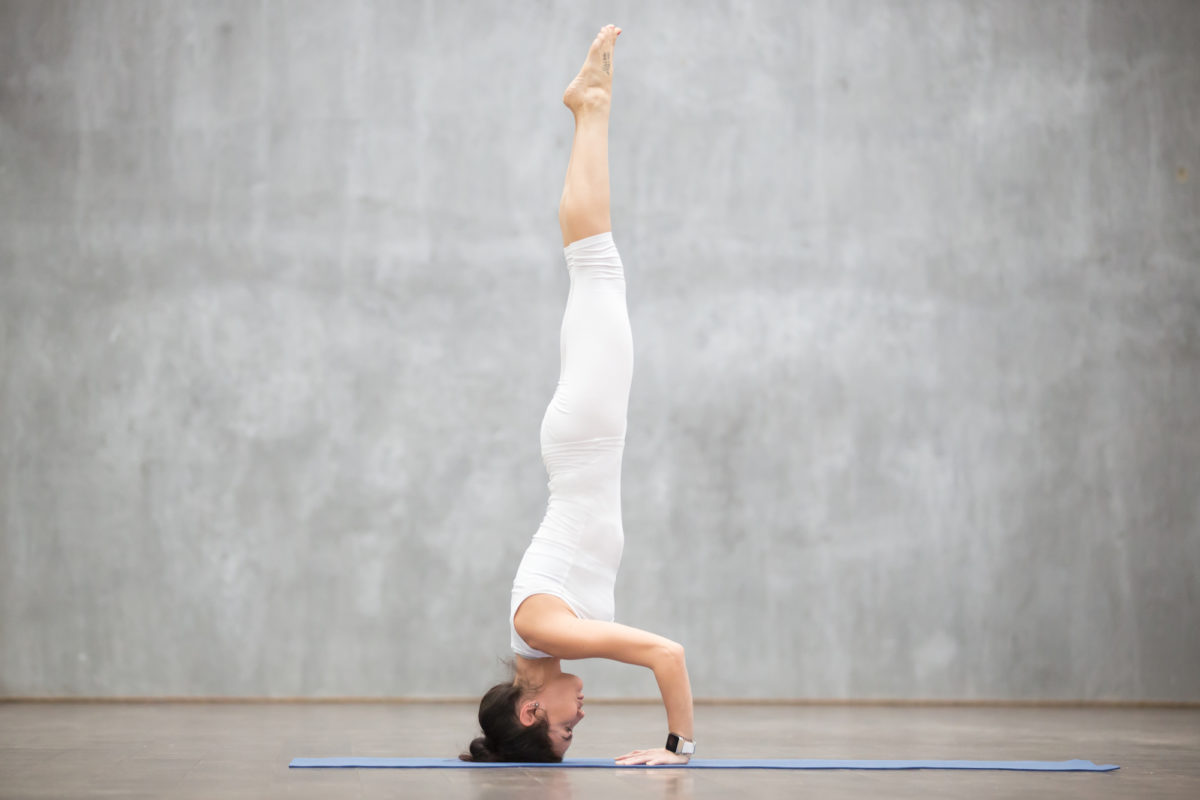This variation of headstand feels easier to some but reality is that there is more caution to be taken here as there is no support for the head or neck. However mastering this pose opens up a variety of fun transitions in and out of arm balances.
Pose Summary

Steps
Step 1
Start in table top position.
Step 2
Place your hands shoulder distance apart and ensure your fingers are spread out wide, slightly gripping the mat, to give you support for balancing.
Step 3
Bend your elbows back and lean forward placing the front part of the crown of your head onto the floor so that your hands and head creates a triangle shape. Elbows should be in a 90 degree angle.
Step 4
Tuck in your toes and lift up your seat towards the sky while straightening the legs.
Step 5
Walk your feet closer to your hands until your feel your hips are in line with and above your shoulders.
Step 6
Lift one leg up as high as you can (you will automatically feel which one feels more natural to you), activate your core and then also raise the second leg. Ideally you should not have to kick with your legs but rather just lift the legs up using your core strength. If you are not there yet make a slight jump with your second leg taking care so you don’t fall over.
Step 7
Stay here for up to 10 breaths.
Step 8
To get out of this pose lower one leg down at a time and finish with coming down in Child’s pose for 5 breaths.
Modifications
A beginner variation to get up if you feel weak in your core you can place one knee on your triceps followed by the second leg on the other triceps. Toes point up to the sky and when you find balance you can start lifting the knees off your arms and straighten the legs up towards the sky.
If you feel comfortable in this pose and your core is strong enough you can get in and out of the pose raising/lowering with both legs together, keeping a pike in your hips.
Another way to get into this pose is starting from Prasarita Padottanasana if your hamstrings are soft enough to allow the crown of your head to reach the floor.
Practice against a wall or with a spotter if you fear of falling over.
If elbows fall out to the sides you can tighten a strap around your upper arms just over your elbows to keep them in place.
Benefits
- Improves blood circulation in your brain and stimulates the pituitary and hypothalamus glands.
- Reduces depression, stress hormones and boosts confidence.
- Improves digestion and detoxifies your body.
- Reduces strain on the heart and improves cardiovascular functioning.
- Improves balance and focus.
- Strengthens abs, shoulders and back.
- Increases body heat.
Contraindications
- Avoid this pose if you suffer from high blood pressure.
- Avoid this pose if you suffer from spondylitis or have any neck or disc problems.
- If pregnant avoid this pose if this is not within your general practice, especially in the first trimester.

